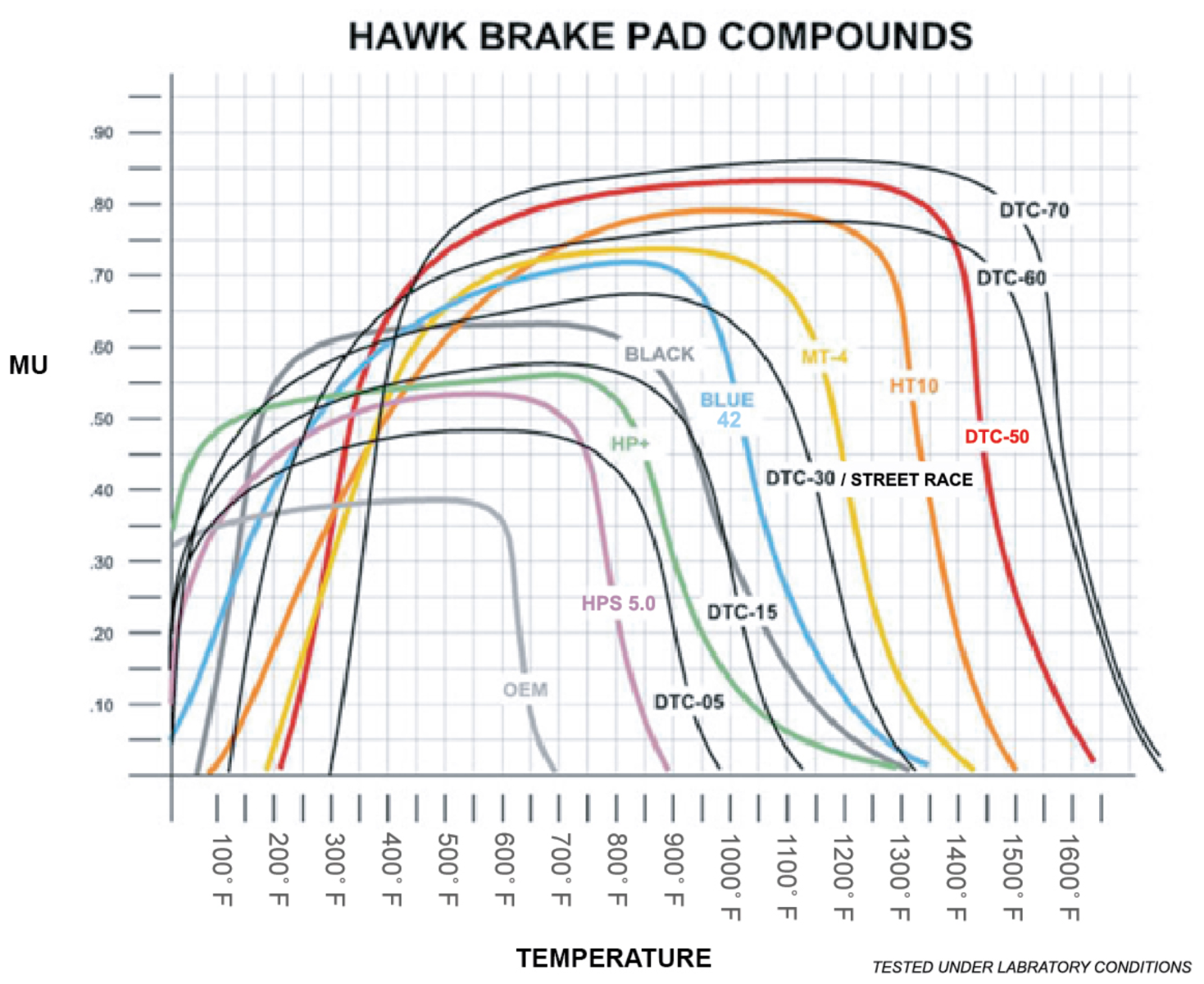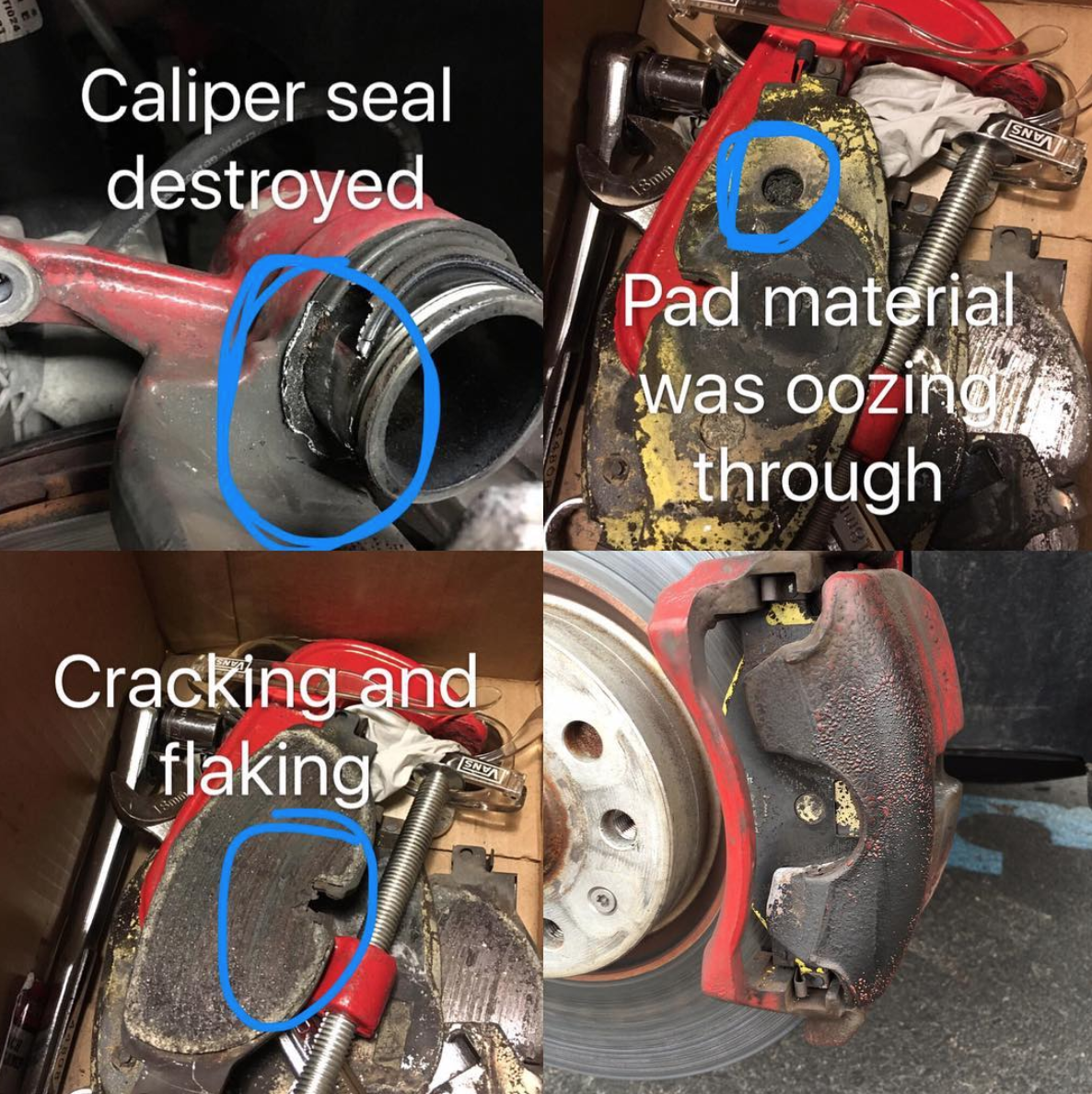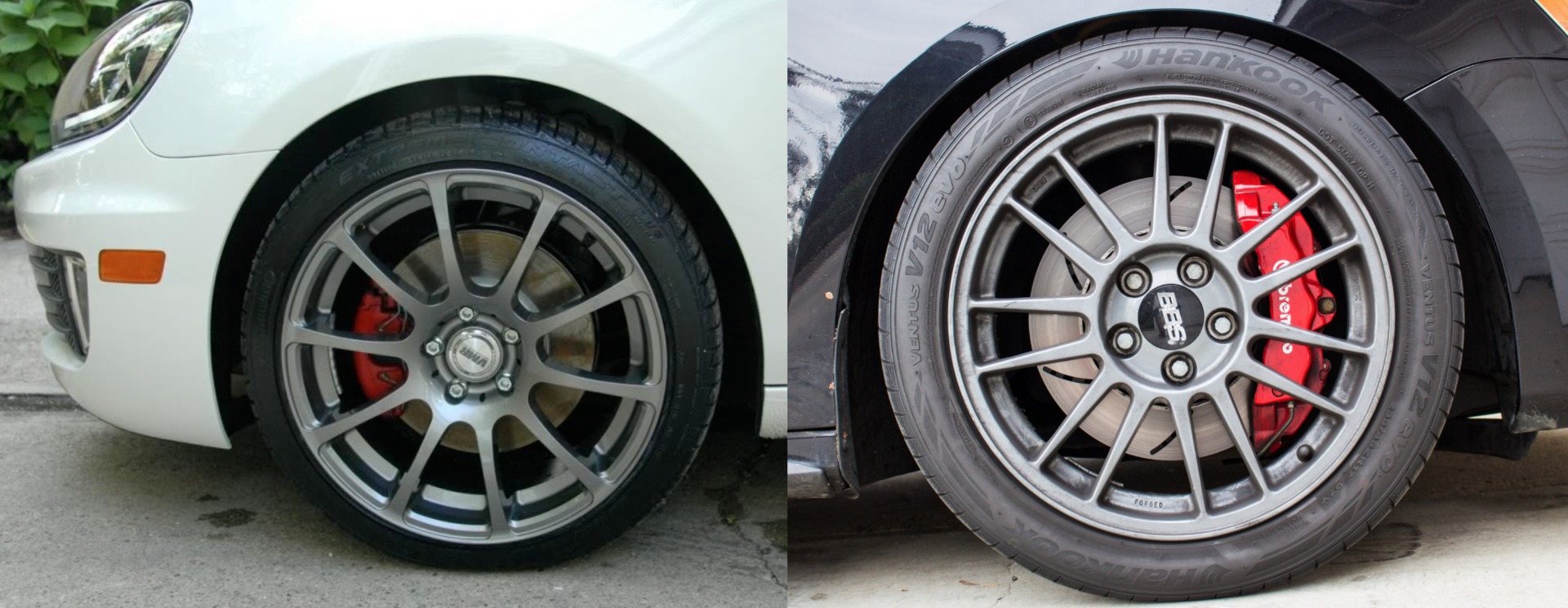Upgrading your Brakes - An Overview


Pads, Fluid, Rotors, Big Brake Kits… getting the best bang for your buck when it comes to upgrading your brakes is not always clear. There’s many upgrade paths, lots of brand names out there, and even lots of different options within brands. So what’s right for you? And more importantly, how much do you need to spend? I believe the best way to know what’s right for you to know is to give you the knowledge to decide!
Brake System Components
A disc brake system is one of the simplest components to understand on a car, so let’s briefly go over the core parts that we’ll be discussing when upgrading your brake system.

After you press the brake pedal, and the brake booster, ABS unit, master cylinder and proportioning valves do their jobs, fluid compresses the piston(s) inside your brake calipers. As the pistons expand, they squeeze the brake pads which make contact with the rotor. The harder the pads squeeze rotor, the more friction, and thus, the more stopping power. In fact, the brake system as a whole can really be summed up as these components:
- Brake pads
- Brake fluid
- Rotors
- Calipers
- Brake Lines
- Master Cylinder*
- Booster*
For the scope of this article, we won’t discuss master cylinder and brake booster upgrades, as such an upgrade varies so much on a case-by-case basis. Moreover, the right choice of pads, fluid, and or even a well-engineered big brake kit often negate the need to change these components. Oh, and a “Big Brake Kit” typically refers to a kit which replaces your OEM rotors, calipers, and brake pads with a different solution. Some kits vary, so always check out the full description of what’s included.
Also note: Some older models do have drum brakes, but that won’t be included in today’s discussion.
Brake System Performance
1. Stopping Power
Stopping power is the actual ability of the brake system to slow down the car. In the early days of drum brakes, it was unlikely that a car’s brake system would even be able to lock up the tires! However, nowadays even a base model Jetta has enough stopping power to lock up the tires—albeit likely laughable econo-tires, but hey! If you’re on racing slicks, you’re going to need a lot more stopping power to overcome the traction of the tire. The important distinction here is that stopping power is its own category: how much force the brake system can apply on stopping the car. When it comes to increasing the stopping power, you’ve got two main options: brakes pads and/or brake caliper upgrade (often by means of a big brake kit).

On most modern cars, the largest factor which affects stopping power is the actual brake pad compound. We typically measure this by looking at the coefficient of friction (often seen as m, Greek letter “mu”). Essentially, this measures how the squeezing force of the brake caliper translates to a stopping force on the rotor. Many racing brake companies will show a graph of temperature vs. coefficient of friction, which will give you a good idea 1) how aggressive the compound is and 2) where the compound reaches peak efficiency. This brings us to our next topic:
2. Operating Temperature
The next big one is operating temperature. Let’s use our Jetta again. It can lock up all the tires so theoretically we could track it right? It’s got enough stopping power! Not quite. See those factory brake pads are engineered to operate a certain temperature range, often low temperature ranges for daily driving. Get them on track and they’ll overheat. Take a look at that same graph. If we look at the OEM brake pad listed, we see that is has a relatively low coefficient of friction, and quickly drops off completely above 600F. That’s no joke, overheat a brake pad and you can lose almost all braking performance! Also you can destory things...

Before you jump to a racing compound though, take a look at the DTC-70 compound for example. It doesn’t even begin to become effective until nearly 400F, meaning during daily driving it would be useless. Additionally, driving on a brake pad outside of it’s designed thermal range also can cause adverse effects such as rotor scoring. For the purpose of explanation, let’s think of brake pads in 4 separate categories:
- Up to 600F pads: A daily driving pad designed for nothing more. Typically quiet, low-dust, and often engineered to last a long time. Example: most OEM pads.
- Up to ~900F pads: Common “performance” pad upgrades. Little to know sacrifice for daily driving, great for the weekend canyon runs, autoX and typically light track duty (e.g. a novice’s first track day). Example: EBC Red. (Yes, I know they claim that they work up to ~1300F)
- Up to ~1200F pads: Think of these as HPDE pads. Pads in this range will start to give up things for daily driving such as lots of dust, often squalling, and noticeably worse performance at low temps. They also might wear out rotors more quickly. However, these types of pads will generally survive most HPDE track days for intermediate guys. Example: EBC Yellow. (Yes, I know they claim as a racing pad)
- 1200F+ pads: True race pads that shouldn’t be driven on the street. Example: G-Loc R12.
This is by no means a formal grouping, as technology gets better we see pads that claim to perform as both daily-drivers and race pads. However, the purpose of this is to show you the different trade-offs between different types or “tiers” or types of brake pads.
3. Thermal Capacity
The second part of temperature is the actual thermal mass of the brake system. When we talk about bigger rotors on a car, we are talking about increasing the thermal mass of the brake system. Why would we want to do this? The more thermal mass there is, the harder it is to heat up a brake system. When you slow down your car, you are translating all of the kinetic energy in your car to thermal energy in your brakes. To better understand this, consider two scenarios.
- Stock brake system with “performance” pads.
- Big brake kit with “performance” pads.
On the same track day under the same conditions, the performance pads will likely overheat, whereas the big brake kit has a much better chance of keeping the performance pads within their ideal operating temperature. This is because in both cases, we are putting the same amount of thermal energy into the brake system, but the larger brake kit has a much higher thermal mass. As such, it will take more energy for the big brake kit to reach the same temperature. When analyzing thermal mass, keep in mind not only the diameter of the rotor, but also the thickness!

Additionally, consider that thermal capacity of a brake system is also a function of the brake pad choice (as noted early), as well as the brake fluid. A low quality brake fluid will have a very low boiling point. When brake fluid boils, it creates air bubbles in brake lines. This can go anywhere from creating a “mushy” brake pedals to as far as a completely non-functional brake system! Brake fluid should always be one of the first things to consider upgrading, as it has virtually no downside. However, I will note that some racing brake fluid have been seen to a have a slightly shorter life span, but even in these cases the performance should not drop below OEM fluid, would it be exposed to the same conditions. Like anything on a car, proper maintenance ensures maximum performance!
4. Brake “Feel” and Modulation
This brings us to the other major advantage of a true big brake kit – pedal feel and modulation. This is essentially how precise force applied to the brake pedal translates to stopping power. Most VW and Audi models (outside some S models, RS models, and some SUVs) come with single piston calipers. This design is prone to caliper flex, which can make modulation and control of the brake system much harder. Additionally, big brake kits replace the OEM single piston calipers with 2-, 4-, 6- or even 8 pistons in certain applications! The result is extreme precision brake precision, and more stopping power.

Shown: Stock Mk6 GTI Single Piston vs 6-piston 17Z Upgrade
However, brake pedal feel is also a function of the pad choice, brake lines and overall brake system. For instance, OEM pads on a MK7 result in almost an inch of “dead travel” where nothing really happens. Swap pads over to some G-Loc race pads, and in that same inch you can lock up the wheels completely. However, in other cars the problem is brake lines. For instance, replacing OEM rubber brake lines with braided stainless steel brake lines can be a particularly good upgrade for older cars. For instance, a MK4 can see significant brake pedal feel improvements with upgraded brake lines. Additionally, caliper stiffening kits can also improve pedal feel and modulation.
Choosing What’s Right For you:
Hopefully the above information gives you an idea of the different performance aspects of a brake system, and how different components affect it. While upgrade paths vary greatly from car-to-car, there’s one general rule of thumb that seems to hold true. If you’re into spirited driving, or looking to get into autocross or track days, a good place to start:
- A fresh set of rotors.
- We only stock quality rotors, so anything on our site should work, even OEM blanks! However, slotted and drilled rotors do add a nice aesthetic and are often less susceptible to warping.
- Upgraded brake pads like EBC Red Stuff.
- EBC Red or EBC Yellow are a great place to start and many owners have had great success with it. Both of these pads dual-duty (meaning street and light track work), but if you are getting more seriously, definitely consider stepping up! (Note, EBC have a different bed-in procedure than most pads!)
- If you’re tight on budget, upgrading only the front pads to EBC Red or similar is acceptable.
- High performance brake fluid:
- Motul RBF 600 is a great brake fluid. Most models can be flushed in 1L (2 bottles), however, if your car is older and you want to ensure a full flush 1.5L (3 bottles) is recommended.
Hopefully this is a good place to get you started!










Comments